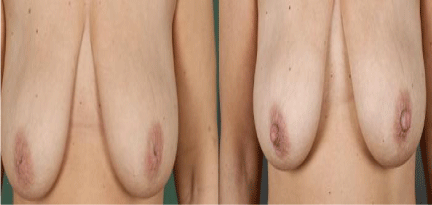Letter to Editor
Nipple Inversion – A Simple Surgical Approach
Iselin Saltvig and Steen Matzen*
Department of Plastic and Breast Surgery, University Hospital Zealand, Denmark
*Corresponding author: Steen Henrik Matzen, Department of Plastic and Breast Surgery, University Hospital Zealand, Denmark
Published: 30 Mar, 2017
Cite this article as: Saltvig I, Matzen S. Nipple Inversion –
A Simple Surgical Approach. Clin Surg.
2017; 2: 1386.
Letter to Editor
In our practice, we frequently receive patients with varying degrees of inverted nipples. It is obvious that its presence can cause great concern, since it may give rise to both functional and esthetic problems, as well as being a sign of malignancy of the breast. It can be an obstacle when it comes to breast feeding if not proper techniques are applied. Furthermore, inverted nipples can cause problems with hygiene, as it depending on the degree of inversion can accumulate debris in the crease. It is however largely a benign condition, and can be treated simply, as shown with the Hoffman’s technique, or by applying local long term vacuum by commercially produced devises. Only when these measures are unsuccessful, do we opt for surgical treatment. This is not because we do not believe in the effect of the vast ocean of techniques, but because it’s a virtue to know when not to perform surgery, and one must be aware of the range of complications. Most importantly, impaired ability to breast feed followed by reduced sensibility, risk of infection, wound healing, recurring inversion and incomplete correction. However, when we chose to perform surgical correction in our clinic, we prefer a well described simple method; in tumescent anaesthesia, we place tension sutures or apply skin hooks in the distal portion of the nipple to provide traction. We then make a skin incision at the base of the nipple using a no 11 blade. We then use the blade to sever the fibrotic tissue, sacrificing the ducts in the process. The result is immediate eversion. To ensure a sustainable result and preventing recurrence, we may choose to place non-resorbable dermal sutures at the base. Our experience is that this technique gives satisfactory results with minimal complications and recommends this well tested method if conservative measures have failed.

